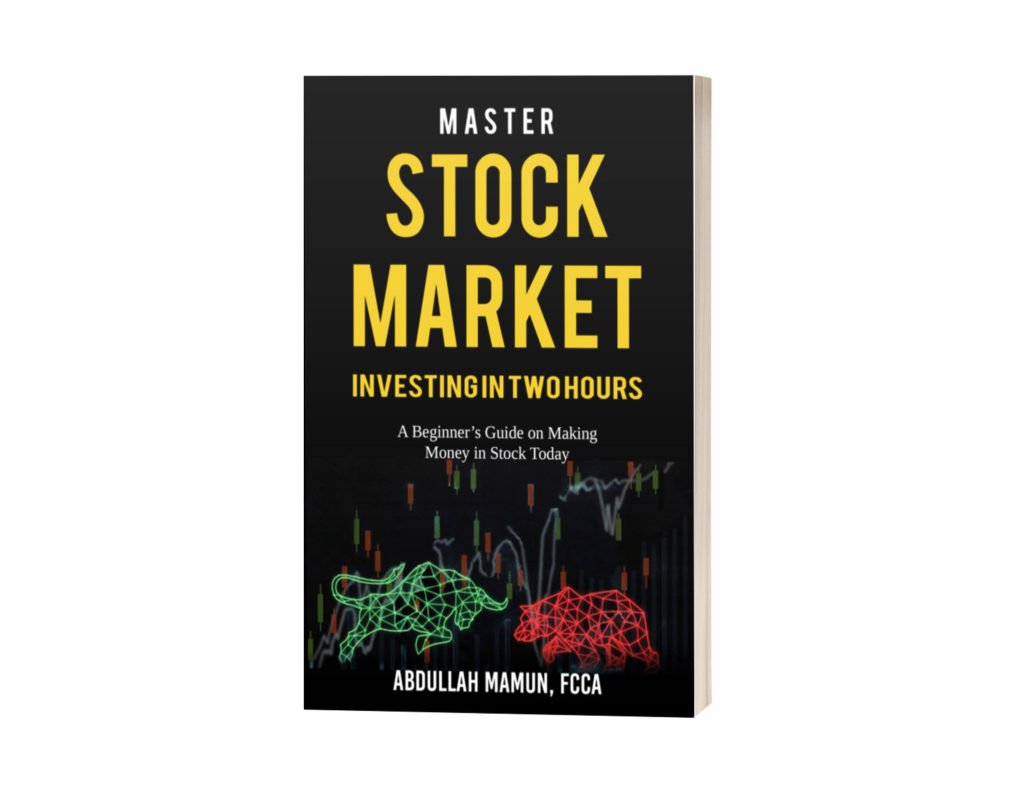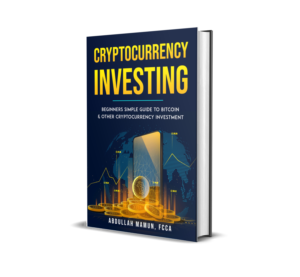Master Stock Market Investing in two Hours by Abdullah Mamun
Best Cryptocurrency Book: “Cryptocurrency Investing” by Abdullah Mamun
Formatting Your Manuscript
One of the questions we ask when we get an edit request is: Do you plan to self-publish or publish traditionally? More and more the answer comes back that they want to self-publish.
If you plan to publish traditionally, often the publisher will give you their formatting requirements, or they will format your manuscript during their edit process. However, if you plan to self-publish, you’ll need to be concerned with formatting your manuscript – preferably from when you start to type it up.
Many of the things we point out here can be implemented at any time. But if you get used to setting your formatting up from the beginning, it will make life much easier for you when you do your pre-publish cleanup later. It will also let you see what your final manuscript will look like as it grows. Often, this will help you spot and correct mistakes or highlight formatting issues as they pop up too.
***
Be aware that we only work with MS Word in creating our own manuscripts and editing the work of other authors. So, if you use a different type of software to create your manuscript, the way you do things will likely be different. Also, we only publish using Amazon KDP. So again, if you use a different self-publisher, check with them to see what their formatting rules are.
***
Let’s start with setting up your manuscript.

Unfortunately, there’s no “Format” button on your keyboard
So, we’ll start by having you go to the “Home” heading in Word where you’ll find the standard word settings across the top.
Fonts
We typically work in either Times New Roman, Calibri or Calibri Light. All are easy to read and accepted by most publishing software. They are also easy to read and work with as you develop your manuscript.
Note: Some fonts, usually the more fancy and unusual fonts, will not be accepted by the publishing conversion software.
For font size, we use 12. This typically is what we publish in too. Anything smaller is too hard to read and it doesn’t add enough white space, so it jambs up the wording on the page. Anything larger takes up too much space and we think is overkill – unless you’re going for a “Large Type” book.
Note: We’ll talk more about white space a bit further down.
If you want something bigger to work with as you spend your days developing your manuscript, go to the lower righthand corner and use the zoom control to increase your display. We typically operate at 120 percent, which eases the eye strain and makes it easier to tell those commas from the periods.
Styles
Unless we’re doing something fancy, we typically use the standard style that shows up in Word. If you’d like something different, select the “Design” heading and choose a style that better fits what you’re looking for. If you type something into the body of the page, the changes will show as you slide your cursor across each of the styles to help you choose.
Line and Paragraph Spacing
For line spacing we prefer to use 1.15 rather than 1. This unjams the wording by adding a wee bit more white space, yet it doesn’t add much to the page count. It also makes things much easier on the eyes for the reader, and you as you write.
For paragraph spacing we do the same thing. We like to use 12pts between paragraphs. This again adds more white space to unjam things and is so much easier on the eyes.
Note: One of the things that drives us crazy as readers is to open a book and find page after page of jammed up wording running from top to bottom and edge to edge. Thus, we try to spread things out a bit and add white space.
We also know of no one who has refused to buy a book because it had an extra 10 or so pages from adding white space. We have, however, seen books put back on the shelf when we or others opened page after page to jammed up writing.
***

The above settings will get you off on the right foot as you type up your manuscript.
***
Some other common format issues.
- Do not use the “TAB” key to set your indents! Amazon’s conversion programs will barf all over your manuscript if you use the tab key to indent. Indent your paragraphs via the style setting or the “Increase indent” selection on the home page.
- Be sure to only use one space after a full stop (period).
- Chapter titles should be larger (we use 16 font size), centered on the page and we use a Calibri or Calibri Light font to help titles stand out a wee bit more. They should also always be proceeded by a page break on the previous page to make sure they appear at the top of a new page.
- One other thing we like to do is give each chapter a title. We consider chapter titles to be an enticement to pull the reader into the chapter. This is not as difficult as most writers seem to want to make it. Remember, you’re not trying to give anything away, just pull the reader in. So, find something enticing in the chapter that doesn’t give anything away. For example, don’t use titles like “Chapter 7 – Jackson Dies”. Instead try “Chapter 7 – Jackson’s in Trouble”. You’ll also have to be careful not make chapter titles too long. Make sure they don’t wrap to a second line.
- For indicating scene breaks or character changes, use *** centered, rather then ——————-. This way the break indication is always the same.
- Finally, if you go to the middle of the Home page header, you’ll see a backward P with the top filled in. If you left click on it, it will highlight every time you entered a space, hit enter to start a new paragraph or inserted a page break. This is extremely helpful when cleaning up your manuscript – such as finding and removing extra spaces, paragraph commands and making sure each new page starts with a page break, when needed.
***
Have we provided you with at least one new formatting tool or idea? Did we miss anything that you think should be added?
In our next blog we’ll add some more formatting items that apply to uploading and publishing your paperback.
***
Bob Boze lives in the south bay area of San Diego and his writing partner, Robyn Bennett, lives in Blenheim, on the south island of New Zealand. They are both published romance and non-fiction authors, editors, speakers and bloggers.
They offer a variety of writer and business services through their business website, Writing Allsorts. To find out more about the services they offer, go to https://writingallsorts.com/ and follow the links to their web sites to learn more about their books.
Something in particular you’d like to know about? We speak, write and do workshops on a ton of writing and business stuff. (Well, okay not a ton but a lot.) Just let us know. If it’s about social media or internet advertising or marketing, we’ll steer you to Laurence at BooksGoSocial, our expert. Anything else is fair game.
Researching Your Story
Robert Boze
Researching Your Story
Robyn and I have sat in writers’ group meetings when the subject of research has come up.
Unfortunately, it seems if you ask ten authors how much research you should do for your story, you’ll likely get ten different answers.

Research? Who wants to do research?
Our answer? Simple. Enough to make your story credible and appealing.
One of the things we can assure you of: If you try and ‘wing it’ on story facts, some one will call you on it.
Some examples:
A recent book I read had the author placing her millionaire’s mansion in a white collar section of Brooklyn. The first two reviews posted called her on it. They then went on to lambast her for not knowing anything about Brooklyn, NY and not bothering to take the time to look the neighborhood up. From there, they launched into multiple issues with her story that could easily have been fixed with a little research. Both of them were further “insulted” for the author missing the beauty of their neighborhood and trying to make it into something it wasn’t.
Even the simplest of details will be caught.
In the second book of my trilogy, I had the fire department called out to deal with a car teetering on the side of a bridge. The fireman that the chief of our fire department had assigned to help me, called me on my description. “You had our primary engine busy on another call, so they brought out our backup engine and had them winch the car off the side of the bridge. The problem is, there is no winch on the front of our backup engine.” Ha! Who would ever have caught that? His wife! She was the one who read it over his shoulder and caught it right away.
Sometimes it’s not a case of being wrong, it’s a case of missed opportunity
An author whose work we edited simply described a park in London where her main characters met, as “beautiful”. When I read the scene, I remembered sitting in that park and how wonderful and relaxing it was; not to mention way beyond just beautiful, no matter what season. After double checking to make sure pictures on the internet reflected what I’d remembered, I directed her to the websites I’d found and suggested she “enhance” her description. I suggested she rewrite it so the reader wanted to catch a flight to London and go sit in the park.
Beware of animals! Woof woof, naahy and meow.
If your going to include an animal in your story you very well better learn all you can about it (them). Dog, cat and horse lovers the world over will nail you EVERY TIME if you get it wrong. Trust us, they are merciless: and excellent at writing seething reviews! I had one rip me apart because she said I didn’t know how much a dead horse’s head weighed (you have to read my story to understand) and that no girl could lift it to slide underneath. What she missed (because she couldn’t wait to nail me.) was that the horse was still alive when he lifted his head so my heroine could slide underneath. (HA! Take that horse lady reviewer!) (Oh, and I didn’t kill the horse, honest, he died of … sorry, can’t remember.)
Scenes are almost as bad as animals.
If you describe real places, you better be accurate. Someone (or ones) live there and if you mess up what their house, street, town, county, state or country looks like, you’ll get called on it. But more often than not it’s a major “missed opportunity” you should be worried about. This is quite often why Robyn uses fictitious towns in her stories so she can play around with geography and the layout of a town, add shops and other things knowing she’ll not get torn to pieces as if it was a real place.
We can go on and on and on covering restaurants, menus, plane flights, airports, stations, train trips, cemeteries, cities, parks, Victorian houses, carriages, cars (Yip, know what a Ford Anglia looks like? We do!), boats, planes, … well we hope you get the idea. And, yes, we’ve written and or edited stories about all of these.
Which leads us to our next section:
Research is fun.
With today’s internet, it’s almost impossible to find something that Google, Bing or Wikipedia (usually all three) doesn’t have a dozen or so pages describing it. Everything from its rich history to dozens of pictures and answers to typical questions about it. These are ideal sources for creating enticing facts and descriptions that you can use to tell and spice up your story.
A word of caution though. Don’t fall into the old pendulum trap. That’s where you go from little to no description to way too much description. Keep it short and make sure the descriptions and facts add to your story line. Don’t just add fluff for the sake of adding things. For example, if you’re writing a mystery, the character will notice the shrubbery they can hide behind but will probably not notice or be interested in the beautiful flower beds.
If your main male character is taking his love interest out for dinner, look up the restaurant, or one you know and like. Use pictures of the outside, inside and their menu to help you describe the scene. The outside only if it helps describe her amazement as they pull up to it. The inside and menu to show how impressed she is. Again, it should fit with the scene you want to paint and, it must fit into the story line.
Taking her off to the rose garden will only distract the reader when she really wants to find the perfect plant to do away with her ex. So, find and head her for the poison garden. There are pretty plants there too that she can appreciate while she plans his demise.
Your research can also be used to develop your characters. Is she totally impressed that he took her to a fab place or perhaps she couldn’t care less: in which case she might be noticing the worn seats, the inattentive server and the bland food.
So, the message here is:

Stand Tall!
Use your research to find both good and bad things you can use to help fabricate or enhance your story and even describe your characters.
You will be amazed at how you can use scenery to help describe your characters. Is she only impressed by elaborate things and classy places or is she okay with a warm cosey café with good food?
Is he taking her to a fancy place or a dump to see how she reacts?
Does she only love roses or is she overwhelmed when she gets a single daisy?
Is she happy going out in a rowboat or is she a cabin cruiser type of girl?
In each of these cases, research fancy restaurants, warm cafes, dumpy eating places, roses, daisies, row boats or cabin cruisers to help you decide what to use.
In closing, the more research you do for your stories the easier it will become. You’ll also find yourself discovering new ways to make your stories and descriptions even better.
***
For your current work in progress or anticipated work, how much research have you done or plan to do? How much of what you learn will be used to just make you smart or actually appear in your work? Finally, were you able to enhance your character descriptions using your research?
***
Bob Boze lives in the south bay area of San Diego and his writing partner, Robyn Bennett, lives in Blenheim, on the south island of New Zealand. They are both published romance and non-fiction authors, editors, speakers and bloggers.
They offer a variety of writer and business services through their business website, Writing Allsorts. To find out more about the services they offer, go to https://writingallsorts.com/ and follow the links to their web sites to learn more about their books.
Something in particular you’d like to know about? We speak, write and do workshops on a ton of writing and business stuff. (Well, okay not a ton but a lot.) Just let us know. If it’s about social media or internet advertising or marketing, we’ll steer you to Laurence at BooksGoSocial, our expert. Anything else is fair game.
Copyrighting Your Work
We get a lot of questions and see some of the weirdest posts on copyrighting so, hopefully this will help.

A realistic look at copyrighting your work
This blog started out to be quite simple. Define copyright, then tell you why should or shouldn’t copyright your work. Ha! That quickly turned out to be not so simple. Then, my wonderful partner Robyn started editing my first cut and threw the plagiarizing monkey wrench in it. So, please bear with us as we try to keep this as simple as we can yet help you to understand copyrighting your work.
To start with, we are not copyright attorneys and in fact have no legal experience. We have, however, done a lot of research on the internet and strongly encourage you to follow our footsteps to better understand what follows.
Our internet sources for what follows are: Wikipedia (https://en.wikipedia.org) and Plagiarism.org (https://www.plagiarism.org/)
One final note. Our research covers US law only so if you live or sell your books in other countries, the laws may be different.
***
Let’s start with what is a copyright? From there we’ll cover some of the elements of copyright law, then talk about plagiarism and finally suggest what you should do and why.
What is a copyright?
Our friends at Wikipedia define copyright as follows:
Copyright is a type of intellectual property that gives its owner the exclusive right to make copies of a creative work, usually for a limited time. The creative work may be in a literary, artistic, educational, or musical form. Copyright is intended to protect the original expression of an idea in the form of a creative work, but not the idea itself. A copyright is subject to limitations based on public interest considerations, such as the fair use doctrine in the United States.
In many jurisdictions, copyright law makes exceptions to these restrictions when the work is copied for the purpose of commentary or other related uses. United States copyright law does not cover names, titles, short phrases or listings (such as ingredients, recipes, labels, or formulas). However, there are protections available for those areas copyright does not cover, such as trademarks and patents.
What’s all that mean? First, the copyright protects the owner and gives them the exclusive right to make copies. That means only you, the copyright holder, can make copies. Anyone else who wants to copy your work needs your permission.
But your copyright is intended to protect the original expression of an idea in the form of a creative work, but not the idea itself. Nor does it cover names, titles, short phrases or listings (such as ingredients, recipes, labels, or formulas).
What’s all that mean? Copyright is intended to protect the original owner’s expression of an idea in the form of a creative work, but not the idea itself. So, to start you’ll probably need some way to prove you’re the owner, which is where fixation comes in. But it also means only your story is protected.
So, if you write a story about CJ helping horses at a horse rescue ranch, like I did, your copywriting the story of someone named CJ helping horses at a specific horse rescue ranch. That does not mean that you own the rights to all stories with characters named CJ or about horse rescue ranches. We’ll talk more about this in a bit too.
Fixation
Fixation means that a works should exist in some tangible, permanent media form before it will attract copyright protection. That is, what you’re copyrighting should be ‘fixed’ in the form of a permanent media. For most artistic works, such as a manuscript, song or photograph, the point at which the work is created is generally considered the point of fixation.
Some jurisdictions require “fixing” copyrighted works in a tangible form when works are shared among multiple authors, each of whom holds a set of rights to use or license the work, and who are commonly referred to as rights holders. These rights frequently include reproduction, control over derivative works, distribution, public performance, and moral rights such as attribution (Credit). (This will become clearer when we get to changes in the law)
What’s that mean? Simple, you need to have whatever you’re copyrighting defined in a media form that can be stored unchanged. This could be a written or digital final manuscript, a published story, typed or written song lyrics or a photograph. Put another way, your original work needs to be in fixed entity that defines what your copyrighting.
Originality
Copyright requires originality for several reasons. For one thing, it ensures that the work protected by copyright reflects the author’s personality and expression and that the effort the author expends in creating the work is substantial enough to justify legal protection. This also means that copyright protection is limited to each author’s expression, leaving non-original expressions and works free for others to use in the creation of new works: in this way, the originality requirement protects the creative and intellectual freedom of other creators.
Huh? Okay, let’s take an extreme example. Let’s say you write a story that ‘borrows’ big chunks from other stories, TV shows, movies, songs and anything else you can find. Or, worse yet, there is absolutely nothing original in your story. When you copyright your story, the only parts that will be covered by the copyright will be the original parts you created. In fact, for all the parts you ‘borrowed,’ you’ve certainly plagiarized the work of others and likely violated multiple copyrights. (We actually read a story that fell into this category.) (We’ll also get to plagiarism shortly.)
Territorial Rights
Copyrights can be granted by public law and are in that case considered “territorial rights”. This means that copyrights granted by the law of a certain state, do not extend beyond the territory of that specific jurisdiction. Copyrights of this type vary by country; many countries, and sometimes a large group of countries, have made agreements with other countries on procedures applicable when works “cross” national borders or national rights are inconsistent. An example of such an agreement is the Berne Convention Implementation Act which provides a standard for those countries that comply with it.
Some countries require certain copyright formalities to establishing copyright, others recognize copyright in any completed work, without a formal registration.
The key here is to be aware that different countries have different copyright laws so, what may be covered by your US copyright may not be honored if your work sells in other countries.
Changes to US copyright laws
We’re only including this so you know how we got to where we are with US copyright law and you can understand some of our suggestions at the end.
Before 1989, United States law required the use of a copyright notice, consisting of the copyright symbol (©, the letter C inside a circle), the abbreviation “Copr.”, or the word “Copyright”, followed by the year of the first publication of the work and the name of the copyright holder. Several years may be noted if the work has gone through substantial revisions. The proper copyright notice for sound recordings of musical or other audio works is a sound recording copyright symbol (℗, the letter P inside a circle), which indicates a sound recording copyright, with the letter P indicating a “phonorecord”.
In addition, the phrase All rights reserved was once required to assert copyright, but that phrase is now legally obsolete.
In 1989 the United States enacted the Berne Convention Implementation Act, amending the 1976 Copyright Act to conform to most of the provisions of the Berne Convention. As a result, the use of copyright notices has become optional to claim copyright, because the Berne Convention makes copyright automatic. However, the lack of notice of copyright using these marks may have consequences in terms of reduced damages in an infringement lawsuit – using notices of this form may reduce the likelihood of a defense of “innocent infringement” being successful.
But what is meant by the Berne Convention makes copyright automatic? This is where Fixation comes in. Since you need to know what’s being copyrighted, the standard interpretation is that as soon as whatever you’re copyrighting is defined in a media form that can’t be changed, it’s automatically copyrighted. To quote plagiarism.org: Almost all forms of expression fall under copyright protection as long as they are recorded in some way (such as a book or a computer file).
Which is the perfect lead into plagiarism!
What is Plagiarism?
According to plagiarism.org: “Plagiarism is the representation of another author's language, thoughts, ideas, or expressions as one's own original work. Plagiarism is considered academic dishonesty and a breach of journalistic ethics. It is subject to sanctions such as penalties, suspension, expulsion from school or work, substantial fines and even incarceration.”
According to the Merriam-Webster online dictionary, to “plagiarize” means:
- to steal and pass off (the ideas or words of another) as one's own
- to use (another's production) without crediting the source
- to commit literary theft
- to present as new and original an idea or product derived from an existing source.
In other words, plagiarism is an act of fraud. It involves both stealing someone else's work and lying about it afterward.
All of the following are considered plagiarism:
- turning in someone else's work as your own
- copying words or ideas from someone else without giving credit
- failing to put a quotation in quotation marks
- giving incorrect information about the source of a quotation
- changing words but copying the sentence structure of a source without giving credit
- copying so many words or ideas from a source that it makes up the majority of your work, whether you give credit or not (subject to “fair use” rules).
So, where are we going with all this? Hopefully by now you’ve realized that there is a fine line between what is copyright protected and what falls under plagiarism. Remember, copyright is intended to protect the original expression of an idea in the form of a creative work, but not the idea itself. Nor does it cover names, titles, short phrases or listings.
So, what if someone only steals parts of your work, some unique words, phrases or ideas? While copyright clearly doesn’t cover these, plagiarism very well may. And plagiarism is suable as an act of fraud.
Before we wrap things up, we need to cover registering your copyright.
Copyright Registration
Registration establishes a claim to copyright with the Copyright Office. An application for copyright registration can be filed by the author or owner of an exclusive right in a work, the owner of all exclusive rights, or an agent on behalf of an author or owner. An application contains three essential elements: a completed application form, a nonrefundable filing fee, and a nonreturnable deposit— that is, a copy or copies of the work being registered and “deposited” with the Copyright Office.
A certificate of registration creates a public record of key facts relating to the authorship and ownership of the claimed work, including the title of the work, the author of the work, the name and address of the claimant or copyright owner, the year of creation, and information about whether the work is published, has been previously registered, or includes preexisting material.
You can submit an application online through www.copyright.gov or on a paper application. In addition to establishing a public record of a copyright claim, registration offers several other statutory advantages:
- before an infringement suit may be filed in court, registration (or refusal) is necessary for U.S. works.
- registration establishes prima facie evidence of the validity of the copyright and facts stated in the certificate when registration is made before or within five years of publication.
- when registration is made prior to infringement or within three months after publication of a work, a copyright owner is eligible for statutory damages, attorneys’ fees, and costs.
- registration permits a copyright owner to establish a record with the U.S. Customs and Border Protection (CBP)4 for protection against the importation of infringing copies.
Registration can be made at any time within the life of the copyright. If you register before publication, you do not have to re-register when the work is published, although you can register the published edition, if desired.
Summary
As soon as you finish your work in a fixed form, it is automatically copyrighted.
That’s great! Maybe. But, what should you do and why?
To start with, if someone steals your work it’s up to you, the copyright holder, to sue them. Even if you registered your copyright with the Library of Congress, they are not going to help you sue. However, if you don’t register your copyright, you can only sue for a cease and desist order and will not be eligible for statutory damages, attorneys’ fees, and costs.
So, what should you do? That depends on how worried you are about having your work stolen.
Our recommendation is:
Place a copyright notice in your work consisting of: Copyright © (year) by (your name).
Why? This way, no one can claim they didn’t know your work was copyrighted. (Believe us, it happens! There is no intelligence test required for book thieves but they are good at playing dumb)
Don’t forget to add a notice for other copyrighted items used in your book. For example, the lyrics to my wedding song in book two of my trilogy holds a separate copyright, which is also listed on my copyright page.
If you really think you’ve got a best seller that someone might want to steal, register your copyright. Remember, you can always register your copyright at a later date; like after your second million copies sell. Seriously, registering your copyright is less than $50 so if you’re really concerned and want peace of mind, register it. (The $50 doesn’t count fixed copy and mail costs.)
When should you register your copyright? When you’re finished making major changes, typically when it’s done being edited. Minor changes such as corrections and small story enhancements will not negate your copyright, as long as they don’t substantially change your work. Also remember, for major changes you can always update your copyright, such as after your work is published or for a new edition.
Some Final Comments
The chances of having your work stolen are slim. Even slimmer are the chances of you finding out about it. However, if the old adage “better safe than sorry” ever applied, this is it. So, do whatever makes you feel like your work is protected.
We often hear concerns about editors stealing an author’s work. If your concerned, copyright and register your draft before you send it off for edit. Remember you can always update your copyright. If you’re still worried, ask your editor to sign a Non-Disclosure Agreement.
Happy writing and copyrighting everyone!
***

Have we missed anything? Let us know.
Bob Boze lives in the South Bay area of San Diego and his writing partner, Robyn Bennett, lives in Blenheim on New Zealand’s South Island. Both are published romance and non-fiction authors, editors, speakers and bloggers. Together they have over twelve published works and are collaborating on several more novels, short stories, articles and other works.
Bob and Robyn also offer a variety of writer and business services through their business website, Writing Allsorts. To learn more about them, their published works and the services they offer, go to https://writingallsorts.com/





